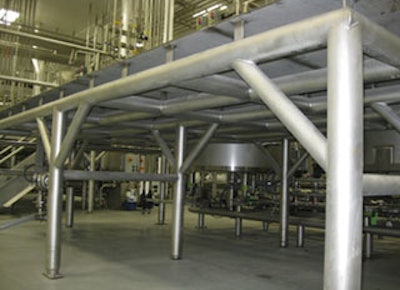
Food safety should always be a shared responsibility for your food processing plant. Whether you’re planning the hygienic design of a new or existing facility, schedule a collaborative planning session with your engineering and construction professionals and individuals from multiple plant departments to answer key questions that will drive the sanitary design of your facility.
1. What products will we be making? At a high level, identify if you’ll be making raw, uncooked products or cooked, ready-to-eat (RTE) products–or both. Does your product mix include allergens? Non-allergens? How about non-GMOs or Kosher products? Mind dry and wet ingredients, as well. These all direct the path of your plant’s sanitary design.
2. How will we make these products? Determine which equipment you’ll be using, how many process lines will be necessary, how will they be packaged, etc.
3. How will we isolate plant areas to ensure they are positively or negatively pressurized? And what types of physical barriers will we need? Remember, the cleanest areas of a plant (ready-to-eat product spaces) must be positively pressurized to keep out unfiltered air. Outside air cannot be drawn in through any openings, so isolating these areas tightly is key. In addition, physical barriers such as interior walls and doors should be strategically located to isolate critical zones and limit traffic between work centers.
4. How many zones of control will we need? If your plant will house both raw and ready-to-eat (RTE) products, you must have separated hygienic zones with proper corresponding filtration levels and airflow. Keep in mind, dry ingredients and packaging areas often require humidity control, each requiring its own “zone of control.”
5. What is the cleaning cycle, and which chemicals will we be using for sanitation? Ensure materials used in the design can withstand both harsh cleaning chemicals and temperature variations. Also consider how you will segregate and store maintenance and cleaning tools. These can often come in contact with unclean equipment during disassembly for cleaning or repair–posing a major food safety threat. Planning ahead from the design stage can prevent this situation in your food manufacturing plant.
I covered other important elements of hygienic design in a food safety column for Refrigerated & Frozen Foods this month. You can read my full piece here.
About Stellar
Stellar is a fully integrated firm focused on planning, design, pre-construction, construction, refrigeration, mechanical & utility, building envelope, and total operations & maintenance services worldwide. Visit the company's blog at www.stellarfoodforthought.net





















